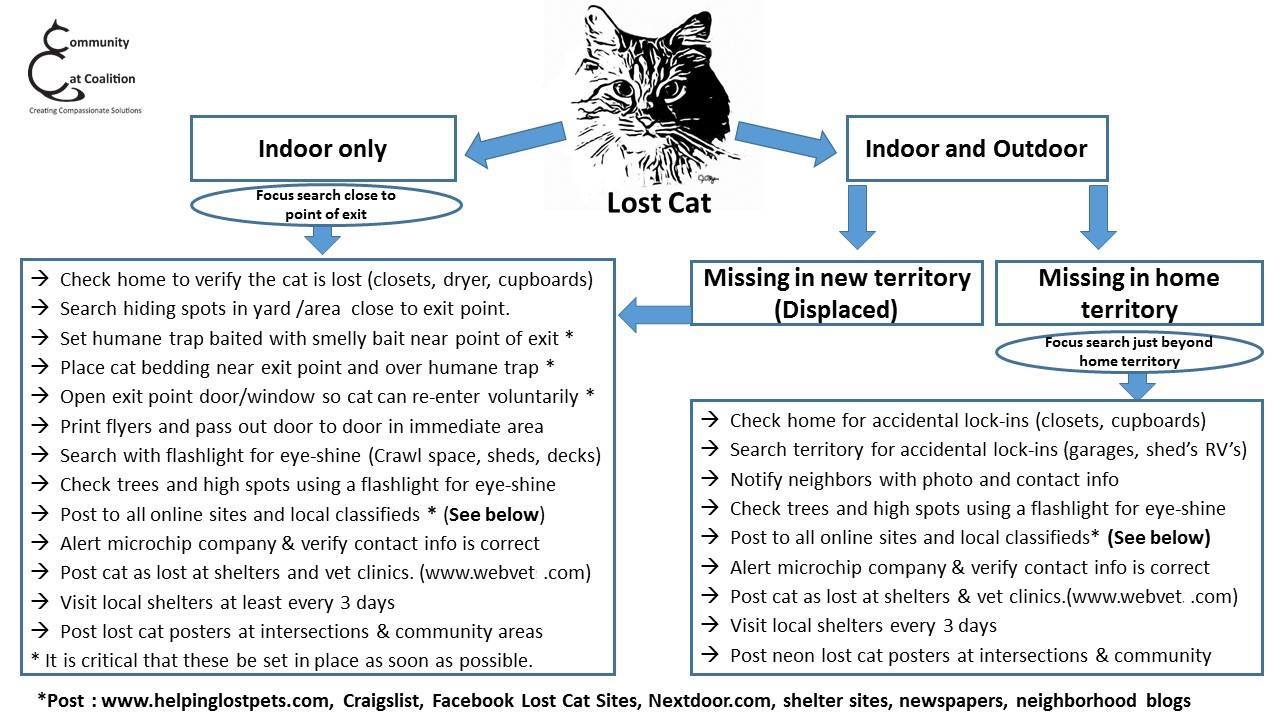Missing Cats
Whether your cat is indoor-only, or has access to the outdoors, the number one thing you can do to keep your beloved pet from going missing is to ensure they are spayed or neutered!
Unneutered male tom-cats may disappear for several days, or even weeks, and they will travel for literally miles in pursuit of a female cat in heat. While it is not as common for female cats to travel so far and wide looking for a mate, unspayed cats may go in search of a tom-cat if given the opportunity.
One easy way to prevent this from happening is to make sure you get your cats either neutered or spayed as soon as possible, this also helps prevent the growth of the feral cat population too, as all feral cats are descendants of a pet cat that was at one time lost or abandoned.
If, despite your best intentions your cat has gone missing, you may be understandably upset and devastated, but don't panic! The best action to take differs depending on whether your cat is indoor only, or an indoor/outdoor cat. The below chart from Community Cat Coalition provides some great advice on how to proceed in either case. Another great resource is the Missing Animal Response Network.
